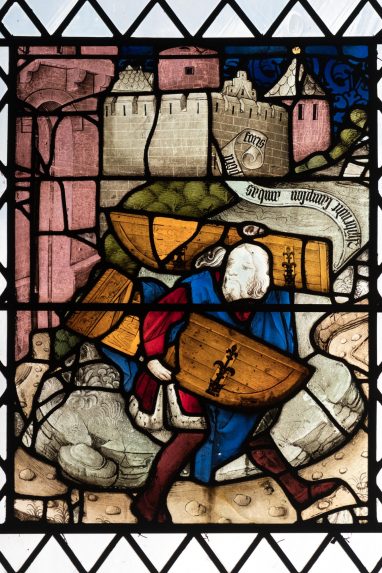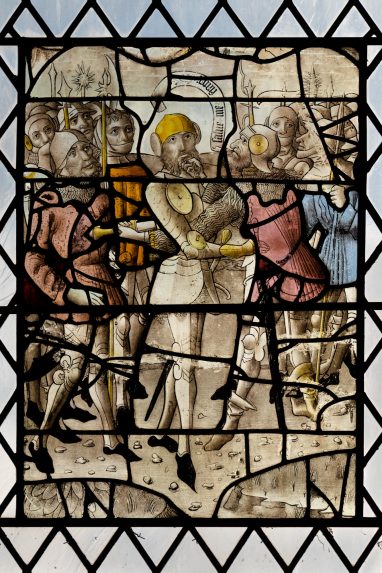Exeter Cathedral, Devon
Address
Cathedral Church of St Peter, 1 The Cloisters, Exeter EX1 1HSTheme
Overview
The star of the cathedral’s stained glass is the magnificent east window, where the earliest glass is from c.1304, as is the recently restored clerestory glass opposite the bishop’s throne. Other fragments of medieval glass can be seen in the chantry chapels.
Most of the Victorian glass was lost or damaged in the Baedeker raids of 1942 and has been repaired or replaced by glass by a variety of artists, both local, (e.g. A F Erridge’s Courtney & Nativity windows, and George Cooper-Abbs’s Cathedral Builders’ window, both for the Exeter firm of Wippell & Co. in the south aisle), and national (e.g. Christopher Webb’s window in the south aisle commemorating the air-raid of 1942).
The west window, which is also a post-war replacement, is of interest as it is the work of the final two owners of the famous Clayton & Bell studio. One of the most well-known and prolific of the businesses founded during the great Victorian revival in stained glass. It had passed down to Reginald Bell, who tragically died in 1950 prior to the completion of the window, the work being finished by his son, M. C. Farrar Bell. There is another work by Reginald Bell in St Edmund’s Chapel.
Highlight
Nine panels in the south window of the Lady ChapelArtist, maker and date
Flemish and French glaziers, 16th centuryReason for highlighting
Nine magnificent 16th century Flemish and French panels depicting scenes from the Old and New Testament. They were originally part of the Costessey Collection, formed in the 18th century by Sir William Jerningham (1736-1809) and placed in their current position in 1955.



Comments by
Peter Hildebrand